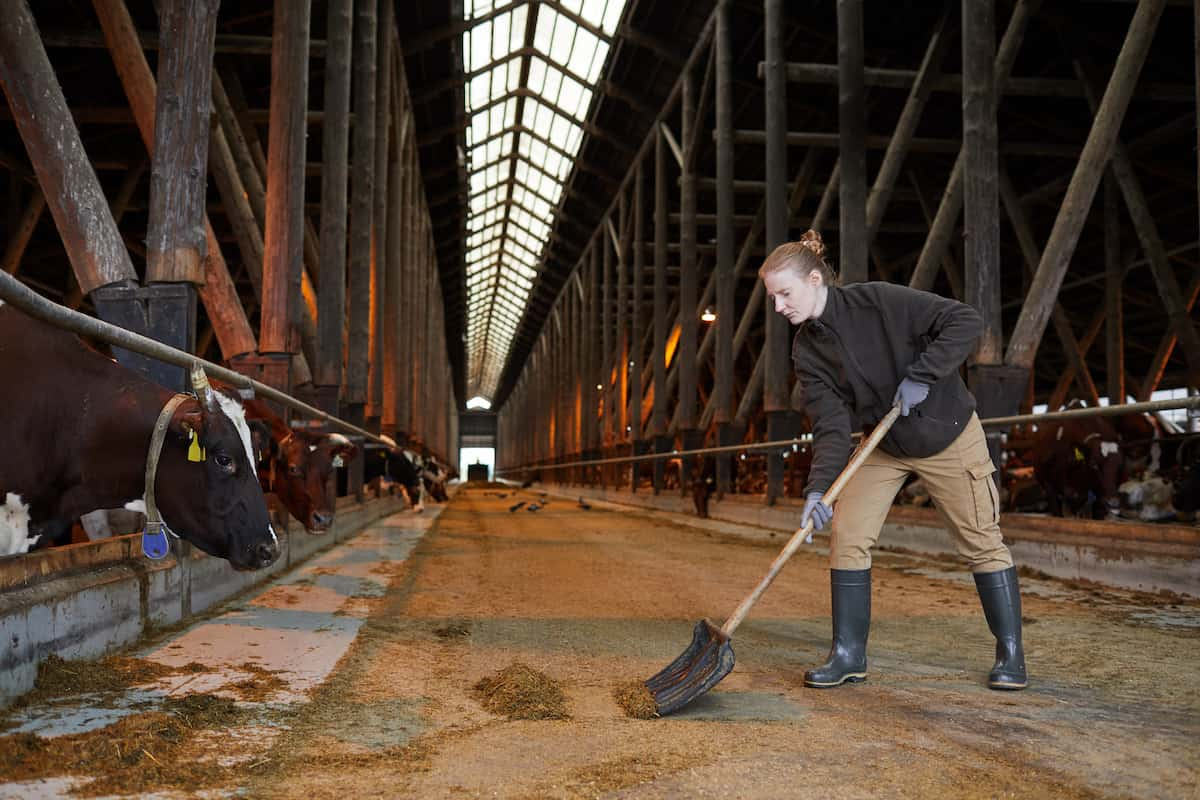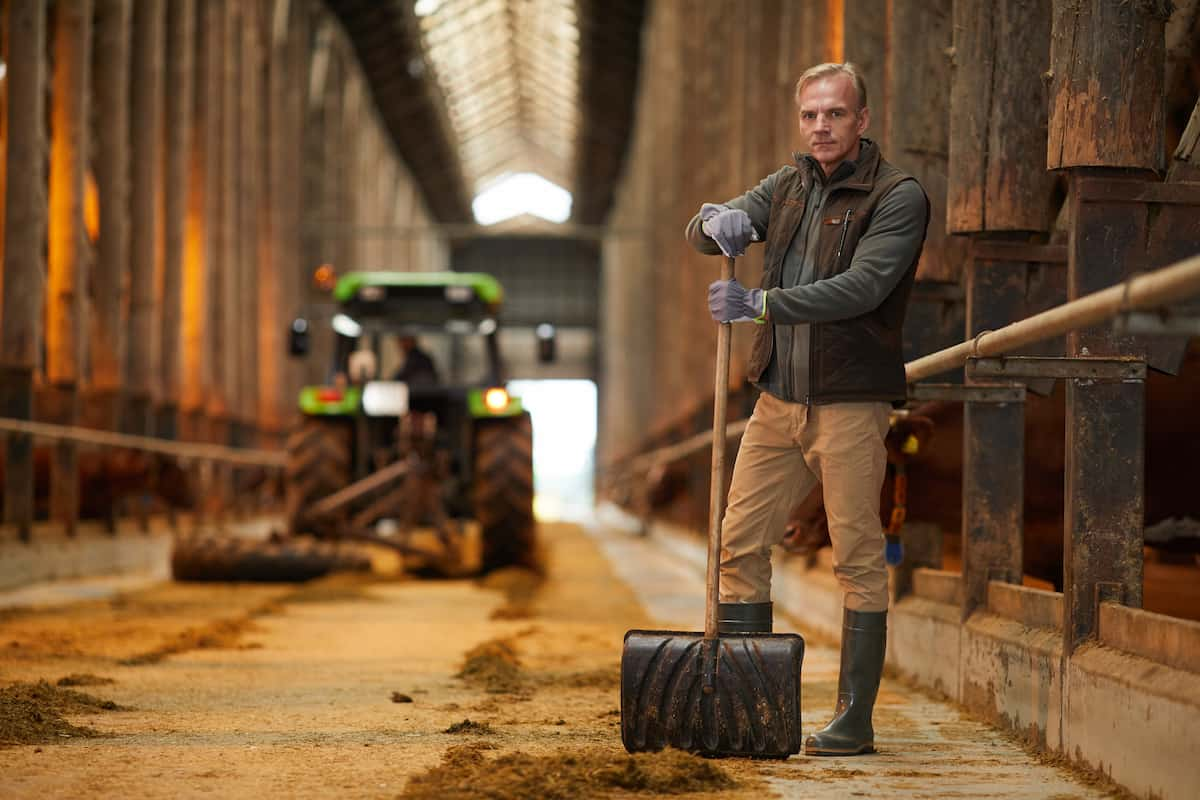Almost everyone agrees that livestock odor is the most irritating and unpleasant odor when it comes to livestock. Farmers can use an Odor Management Plan to assess the odor situation on their land and find solutions. An odor management plan that identifies odor sources, identifies control practices and establishes a monitoring strategy helps livestock farmers manage farm odors.

Factors Need to Be Considered While Creating an Odor Management Plan
- Identifying the major sources of odor on the farm
- Assessing the intensity of odors coming from different sources
- Analyzing current practices for controlling odors and identifying potential ones
- Developing a plan for monitoring farm odors
- Developing a strategy for maintaining and enhancing relations with the community
How to Control Farmstead Odors
Site Selection and Management
Site selection can minimize odor problems. Ensure that the site is located far from neighborhoods and public areas. It is important to consider the prevailing winds during the summer when many people spend a great deal of time outdoors. Locate the building away from slope gradients that will allow odors to flow to neighbors. Plant crops and windbreaks around housing and storage to keep them out of sight.
Designing Housing and the Management of Housing
Keeping housing clean is a significant factor in reducing odors when designing and managing housing. The odors cling to dust, holding them close to the ground. Dust management practices will reduce odors when they minimize dust. Management techniques that reduce dust and odor include adding more fat to feed, covering feed equipment, and cleaning fans and areas where dust can accumulate. A windbreak near the housing will help push odorous air into the atmosphere and prevent it from moving along the ground’s surface.
Prevention Strategies for Controlling Odors from Livestock Farms
If you want to prevent bacteria from causing odors, you can follow three routes. You can prevent bacteria from growing in manure, change manure to reduce odors, and move waste to a place where odors are less problematic.
- It is difficult to prevent bacteria from growing in manure. Several ways to reduce bacterial growth include using biocides and disinfectants, adjusting the pH, cooling manure, pasteurizing it, and keeping it dry.
- A change in animal diet may also reduce odors. Sulfur and nitrogen compounds emit particularly strong odors. We might prevent these strong smells by reducing the nitrogen and sulfur content of the feed.
- In addition, you can prevent bacteria from growing by moving manure away from trouble spots as soon as possible. The rotting manure in a building will release fewer odors if flushed frequently from the building.
Alteration of Strong Odors Released from Livestock Farms to Less Odorous Gas
It is possible to alter strong odors into weaker ones using alteration methods. A lagoon uses alteration to reduce odors. Sludge layers form at the bottom of lagoons as manure solids settle to the bottom. The sludge layer releases strong-smelling liquids due to bacteria living there. A second group of bacteria in the sludge converts the strong odorous liquids into less odorous gases. When a lagoon is overloaded with sludge, it smells worse than when properly operated because the good bacteria above it are overwhelmed with food.
- Farmstead odors can be altered using two types of chemicals. Organic matter is converted into odorless gases by oxidants. An anti-odourant binds to odorous chemicals and weakens their smell.
- A third type of chemical, masking agents, does not reduce farmstead odors. It is possible to mask bad odors with stronger, more pleasant ones using masking agents.
- The purpose of masking agents is not to alter odors but rather to conceal them. It smells strongly of manure. Adding a stronger scent only makes the manure smell worse.
In case you missed it: How to Control and Treat Pasture Bloat in Cattle

Restricting the Releasing the Odors Into the Open Environment by Using Filters
Trap and hold odors before they can escape. Filters are usually used to trap odors. Physical and chemical methods are used to trap odors in filters. Filters can alter trapped odors by using living organisms.
Gases containing hydrogen sulfide are highly toxic and odor like rotten eggs. Anaerobic bacteria (bacteria that need oxygen-free environments to survive) grow in sulfur-containing manure to produce it. The hydrogen sulfide in hydrogen sulfide sticks to iron. The hydrogen sulfide will remain with the iron filings if manure pit gases are passed through a filter made of iron filings.
Dispersion of Odors Released from Farms
Disperse odors by using the power of the wind once they leave the farm. Dispersion dilutes farmstead odors before they reach neighbors’ noses when there is a separation distance between a farm and its neighbors. It is important to strategically place trees on the farm to help the wind mix and dilute odors.
It is not always possible to disperse odors. Air flowing downhill carries heavy farmstead odors to low spots in the landscape on calm nights and early mornings. Cold air drainage is the process of removing moisture from the air. When there are no winds, you must resort to other strategies (prevention, alteration, and capture) to reduce odors.
Land Application Considerations for Reducing Odor
You should discuss the manure application with your neighbors. The application should be coordinated with outdoor events to minimize the impact of odors. The neighbors may be less likely to be offended if they know the manure application in advance.
- Manure tanks and basins should not be irrigated with concentrated liquid slurry.
- A still day or when the wind blows toward neighbors should not be used for agitation or surface spreading of manure storage.
- Avoid applying manure during weekends, holidays, and social events if possible.
- Surface-apply manure during good drying conditions, such as early morning, low humidity, high wind, clear sunny weather, and tillable ground.
- Manure should be applied to the surface when airflow patterns are turbulent or rising.
- The surface-applied manure’s application rate should be reduced to promote drying and reduce the release of odors.
- Manure applied to the surface should be incorporated as soon as possible after application, preferably immediately.
- If you are irrigating, use a low-pressure, low-trajectory irrigation system. Drop nozzles can be installed on an existing system to minimize odors.
In case you missed it: Homemade Fertilizer for Vegetables in Your Home Garden

Conclusion
The most effective odor abatement plans combine multiple strategies. Stick to your plan once you’ve made it. No expensive engineering changes are required to control odors in a farming operation. Keeping surfaces clean of manure and flushing pits at the proper frequency will prevent the creation of odors in the barn. Keeping the lagoon’s liquid levels at the right level will keep it healthy. A moist biofilter traps and digests odors better.
- Feed Your Flock for Less: Top 10 Tips to Save on Chicken Feed
- Ultimate Guide to Ossabaw Island Hog: Breeding, Raising, Diet, and Care
- Hatching Answers: The Top 10 Reasons Your Chickens Aren’t Laying Eggs
- Eggs and Economics: Breaking Down the Cost of Raising Backyard Chickens
- Defend Your Greens: Proven Methods to Keep Iguanas Out of Your Garden
- Ultimate Guide to Cinnamon Queen Chicken: A Comprehensive Guide for Beginners
- Ultimate Guide to California Tan Chicken: Breeding, Raising, Diet, Egg-Production and Care
- Ultimate Guide to Marsh Daisy Chicken: Breeding, Raising, Diet, and Care
- 10 Types of Chicken Farming Businesses You Can Start for Profits